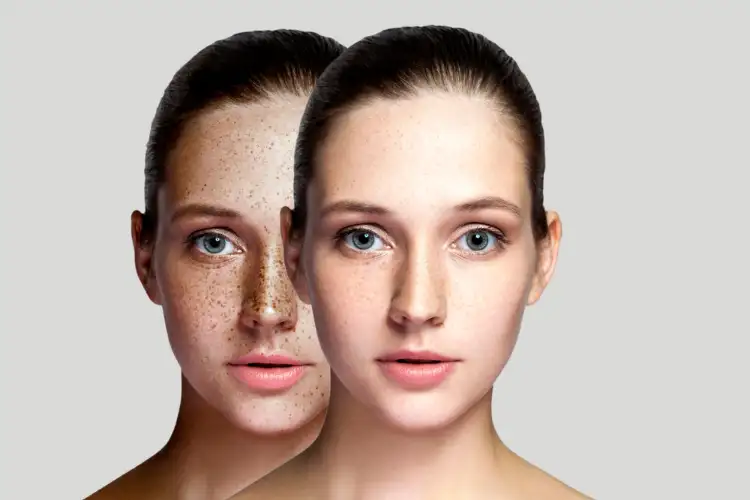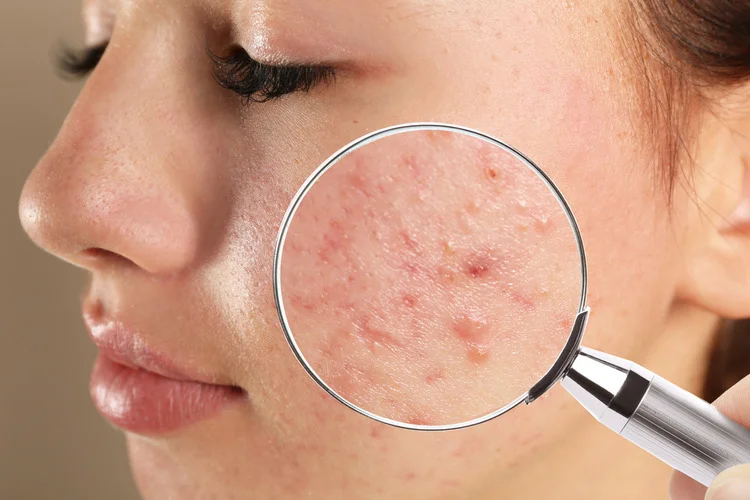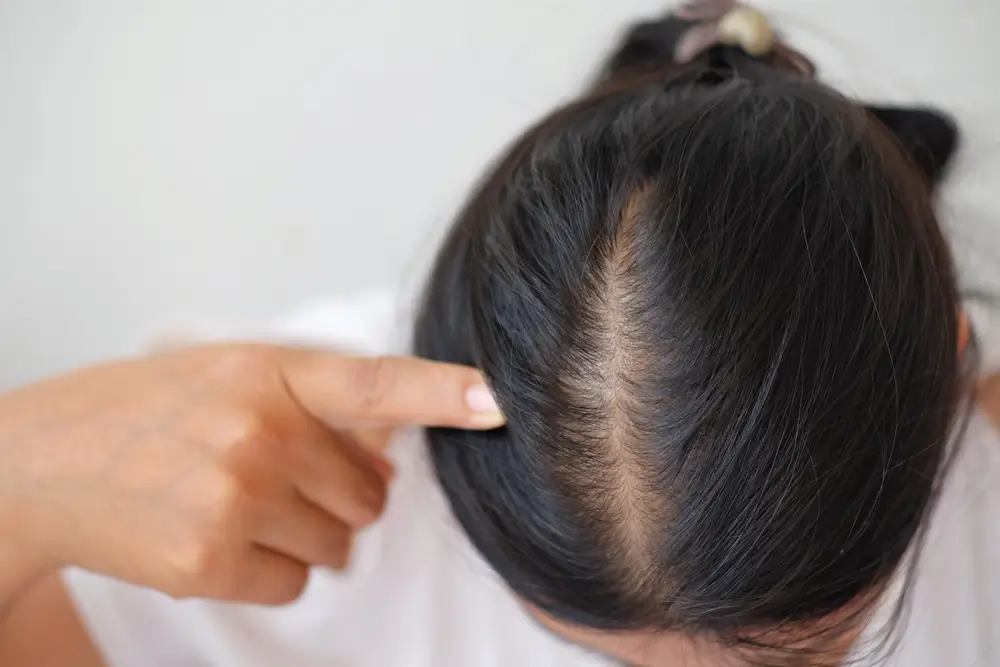Pigmentation Removal Treatment in Lucknow
Pigmentation is a disease that causes dark spots on your skin. There are different kinds of pigmentations. These have superficial pigmentation caused by mild sun tan and sun damage; frictional pigmentation due to constant rubbing; and deep pigmentation, which is challenging to treat, like melasma, serious sun tan, Hyperpigmentation and additionally.
The Stanford Health Care website states these brown spots can last on your skin for a lifetime. It is because the natural colour of your skin results from melanin, a pigment present in your body. Melanin conditions can lead to pigmentation on your skin, and this results in the happening of dark patches. If you see that you are producing these spots, a pigmentation treatment can help you. Numerous procedures can reduce pigmentation.
What causes Pigmentation?
The two primary causes for skin pigmentation are sun exposure and hormonal changes. Hormonal differences are common during pregnancy and if you have certain medical conditions. In addition, some medicines have hormonal changes as a side effect. These can show pigmentation. Sun exposure, too, can result in skin pigmentation, specifically on areas that are now exposed, like your face, hands, and neck.
There are three Types of Hyperpigmentation.
There are several types of Hyperpigmentation, the familiar ones being sunspots, melasma, and post-inflammatory Hyperpigmentation.
-
Melasma. Melasma is thought to be caused by hormonal changes and may grow during pregnancy. Areas of Hyperpigmentation can appear on any body site, but they occur most generally on the stomach and face.
-
Sunspots. Also named liver spots or solar lentigines, sunspots are common. They're affiliated with excess sun exposure over time. Generally, they occur as spots on areas uncovered to the sun, like the face and the hands.
-
Post-inflammatory Hyperpigmentation. It is a result of injury or inflammation of the skin. A familiar cause of this kind is acne.
Symptoms & Risks of Pigmentation
Darkened spots on the skin are the main signs of Hyperpigmentation. Patches can vary in size and form anywhere on the body.
Sun exposure and inflammation are the most significant risk factors for general Hyperpigmentation, as both situations can increase melanin production. Therefore, the greater your exposure to the sun, the greater your risk of improved skin pigmentation.
Depending on the type of disease, other risk characteristics for hyperpigmented patches may have:
-
Verbal contraceptive use or pregnancy, as seen with melasma
-
Dimmer skin type, which is additionally prone to pigmentation differences
-
Drugs that improve your sensitivity to the sunlight
-
Concussion to the skin, such as a wound or external burn injury
Topical products
-
Lightening creams – You can use skin-lightening creams, too, as a pigmentation treatment option. The most effective lightening creams contain hydroquinone, liquorice extract, N-acetylglucosamine, and vitamin B-3. These can assist in improving your skin tone and produce the dark spots lighter. The specified skin-lightening lotions can be effective if you utilize them at least twice daily. You can notice the result over time. However, these creams have been advised by the dermatologist. Lightening creams have Vitamin C, Mandelic Acid, Ferulic Acid, Kojic Acid, Glycolic Acid, and Azelaic Acid. It would help if you ensured the creams had these essential active ingredients. However, many plant-based products are also available, which can be helpful too.
-
Retinoids – Derived from vitamin A, the short molecular form of the Retinoids allow them to treat pigmentation by entering your skin. This ability of Retinoids creates one of the most valuable elements in dark spots, which is why many skin-lightening products utilize it as an element.
-
Topical sunscreens – Long sun exposure shows pigmentation on your skin. The U.S. FDA recommends using topical sunscreen to guard your skin against the dangers of sun exposure. However, that is not the only way topical sunscreens can help you. These effects also have vibrant ingredients that safeguard your skin from dangerous UV rays and can reduce already existing dark spots. Hence, sunscreen products are pretty effective for saving yourself from pigmentation. Sunscreen application is essential for anyone treated for pigmentation and regularly used. The sunscreen must be involved 20 minutes before potential sun exposure and repeated every three to four hours. Physical sunscreens like an umbrella, hat, scarf, or jacket can even be helpful against direct sunlight exposure.
-
Exfoliating polishes – Exfoliating classes are used as a pigmentation therapy, as they can remove the damaged skin cell's upper layer of your skin. The lotions have magnesium crystals, which exfoliate the pigmentation on the impacted areas of the skin and cause them to be lighter and more evenly toned. These polishes also clean the clogged pores of your skin. The newer exfoliating polishes have glycolic acid, lactic acid, mandelic acid, and retinoic acid, which function well without over-drying the skin. You can utilize these scrubs thrice a week to reach the expected result, but you must be soft with them.
In-Clinic Treatments
How do dermatologists treat Pigmentation?
-
Chemical peel – It is a skin resurfacing procedure used to treat skin pigmentation. The chemical peel can exfoliate dead skin cells and resurface the younger, healthier skin layer. This way, the dark areas on your skin are decreased. The alpha-hydroxy acid, trichloroacetic acid and glycolic acid are used as agents in different peels and mediums, depending on whether you need a light or deep peel treatment. The Velvet Skin Centre provides various treatments: Spotless You Peel, Cosmelan Peel, UBER PRO Peel (with Dermapen), Miami Peel, Ferrulac Peel, Super Bright, and The Pigmentation Freedom Peel. All these treatments are conducted flawlessly under the supervision of skilled and experienced dermatologists.
-
Medi-facials – Medi-facials can enhance the health and quality of your skin by penetrating in-depth into the targeted areas. Dermatologists use different media-facial treatments depending on how dark your pigmentation spots are. At The Velvet Skin Centre, the various treatments that we offer in media facials include The Brightening Facial, SuperJet Facial, The Infusion Facial, The Hollywood Laser Peel, The Pumpkin Facial, Anti-Clock Facial, The Intensive Vitamin C Facial, The Bright Eyes Treatment, and The Glass Skin Facial.
-
Mesotherapy – This pigmentation treatment utilizes injectable agents to treat the dark spots on your skin. The most generally used agents are vitamins, enzymes, hormones, and plant extracts, which can treat pigmentation effectively. Depending on your situation, these are infiltrated into the different depths of the skin areas affected by the pigmentation. However, the treatment may have side effects like nausea, sensitivity, redness, scars, swelling, rash, and pain. Using the MCT microinjector gun to perform the process makes the process easy and requires no downtime.
-
Microneedling – Microneedling is a minimally-invasive therapy procedure for healing skin pigmentation. To complete this procedure, your dermatologist will use attractive needles to puncture the targeted areas of your skin. Your body starts to heal the holes. With time and the purposely made skin damage, your body heals the pigmented spots too. The new Dermapen 4 technology creates the procedure even better effect. After the micro-needling treatment, Meso serums like Vitamin C, Ferulic acid peel, Glutathione, and Retinol peel can penetrate deeper into the skin. It can help treat the pigment cells discovered more profoundly in the skin layer without requiring any downtime.
-
Laser peel is a safe and practical way to treat skin pigmentation. The dermatologist utilizes a laser device to send wavelengths into the targeted regions of your skin. The laser wavelengths destroy the destroyed skin cells and decrease pigmentation. This procedure has no harmful side effects, and the result is quickly visible. These days, the Q- switched laser machines are used for their advanced features. The laser wavelength used is Q- switched laser, which assists in breaking the pigment cells and removing them from the body innately. It needs no downtime and will not result in improved sensitivity to the sun. However, it needs more sessions, but you can expect to see progress after each session.
-
Q Switch Laser - Besides helping treat pigmentation, the Q-switched laser improves skin brightness, tone and texture. It must be executed in a registered clinic utilizing a USFDA-approved machine under the supervision of a professional dermatologist to achieve the best possible results.
-
IPL Therapy – Intense Pulse Light (IPL) therapy is another laser pigmentation treatment procedure used to cure dark spots on the skin. When the laser is applied to targeted areas, it increases collagen production, which naturally starts to treat the affected skin. With time, the dark spots are reduced and get lighter. This treatment is ideal for you if you have fair skin, as the procedure is safer for more fair skin and must be used cautiously on darker skin. However, with advancements in lasers and Pico lasers, IPL therapy has become less popular.
-
Microdermabrasion – This method requires using a medical device to remove the epidermis layer of the skin. This procedure requires multiple sessions, but removing the pigmented areas is effective. You need to ensure that performed by an experienced dermatologist who can guarantee the best results.
-
LED light treatment – The Red LED light positively affects the skin and can prevent pigmentation even after sun exposure. It also reduces sunburn and other types of inflammation. An LED light device treats this pigmentation. This treatment has minimal downtime and is painless, safe, and non-invasive.
-
Photodynamic treatment – Photodynamic treatment (PDT) has a very positive effect on the skin. It is also known as the 'Super Blue Light' treatment. In this procedure, a photosensitizer is used on the targeted areas of the skin to reduce pigmentation. Other than that, this light therapy can also improve sun-damaged skin and fine lines.


